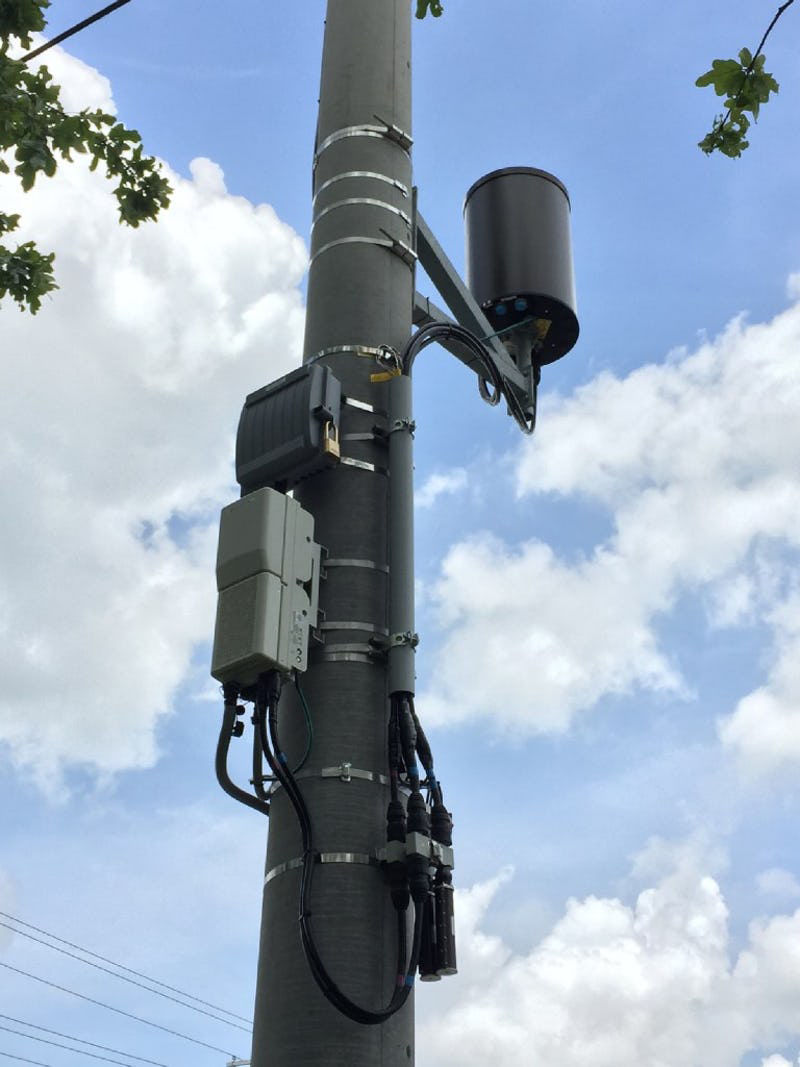If you've ever walked through a town you might have noticed tiny 5G cell towers on street light poles. They appear like tiny boxes however, they're actually transmitting wireless signals from cellular providers to your mobile.
The smaller ones are being replaced by the larger built cell towers. Although they're not as visible but they can still cause problems for people.

A of the FCC's Radiation Exposure Thresholds
The FCC's Radiation Exposure Thresholds determine the safe limit at which a person can be exposed to electromagnetic energy generated by wireless devices. The limits for exposure are based upon scientific research which show that the energy of RF can be harmful to health.
The specific absorption rate (SAR) is an indicator of the amount of radiofrequency energy absorbed by tissue. safe distance from cell tower 's usually 1.6 Watts per kilogram spread over a Gram of tissue.
But, since 5g operates at higher frequencies and has the potential to increase the intensity of energy on the skin as well as other body areas. This could lead to a wide range of possible harms, such as an increase in development of skin diseases like dermatitis, cataracts and skin cancer.
Due to the possible negative effects of 5G radiation, PSU has chosen to create a general power density limit of 4 mW/cm2 based on the average on 1cm2, but not exceeding 30 minutes for the entire 5G spectrum at 3000 GHz. This localized limit is in accordance with the highest spatial-average SAR of 1.6 W/kg, which is averaged over 1 grams of tissues at six GHz.
The FCC's Maximum Exposure Thresholds for Maximum Exposure
If you've ever operated a cell phone, you probably know that a safe range from the tower is at least 400 meters away. This is because the transmitting power of cell towers increases drastically the further away you are from it.
While it sounds like something that's good, the reality is that those living close to towers might be more prone to health issues. For example, a study from 2014 in India discovered that those who lived within 50m of cell towers had much more health problems than those who were away from the antennas.
This study found that people who moved to areas further away from cell towers noticed their symptoms improve within a couple of days. Studies have also revealed that exposure to high frequencies of radiofrequency electromagnetic fields (EMFs) could cause brain tumors, cancers, and other health problems.
This is due to the fact that RF radiation, which is used for wireless communication, has the ability to penetrate the body's outer layer, the skin. It is vital to be aware of this since the skin functions as a barrier to protect against mechanical injury, infection from pathogenic microorganisms, as well as the entry of harmful substances. It is also the biggest organ of the human body, and is responsible for maintaining the integrity of other organs.
The FCC's Minimum Exposure Thresholds for the Minimum Exposure
The FCC's Minimum Exposition Thresholds depend on a variety of assumptions that aren't supported by scientific evidence. They include the false belief that exposures to RF radiation are safe because of the minimal penetration into the body (i.e. the heating of tissues).
safe distance from cell tower is also ignoring the more extensive penetration of ELF components of modulated RF signals, as well as the effects of brief bursts of heat generated by RF waves that are pulsed. These assumptions do not correspond with current knowledge of the biological effects of RF radiation, and thus they should not be relied upon for health-protection exposure standards.
Additionally there is the fact that both ICNIRP and FCC limit their maximum exposure limits to local peak SARs, based on the peak spatial specific absorption rate (psSAR) which is not a sufficient dosimetric tool to determine the degree of radiation exposure. Particularly, psSAR is inaccurate for frequencies that exceed 6 GHz. Additionally, psSAR hasn't been evaluated for what is a safe distance from a cell tower that is exposed to other environmental agents such like sunlight. The interactions of RF radiation with other agents in the environment could produce synergistic or antagonistic effects. This could result in the risk of having adverse health effects. For example, co-exposure to RF radiation along with exposure to sunlight can increase the risk of skin cancer and exacerbate other skin conditions like acne.
